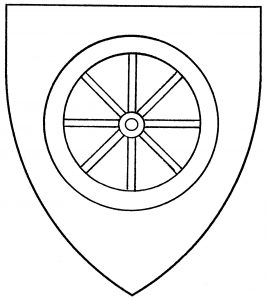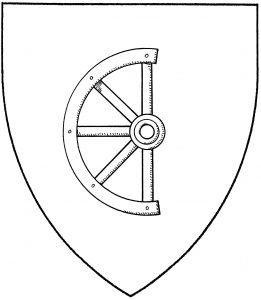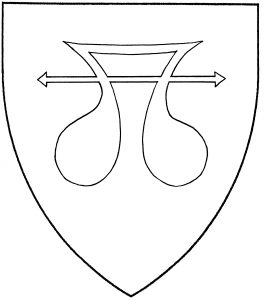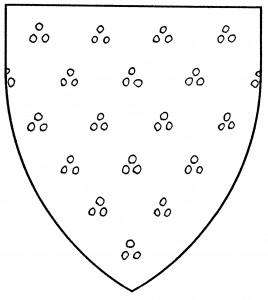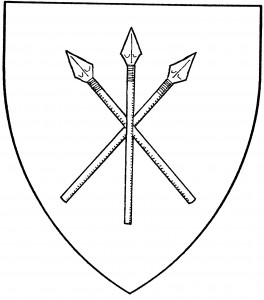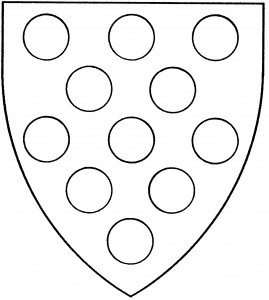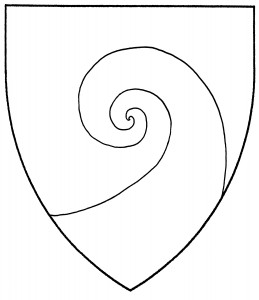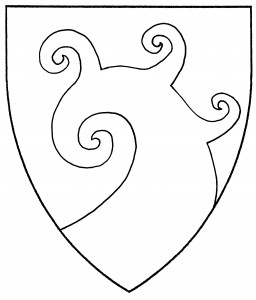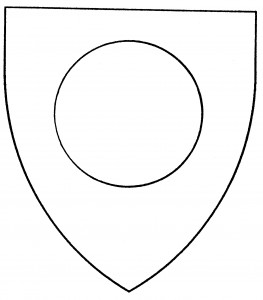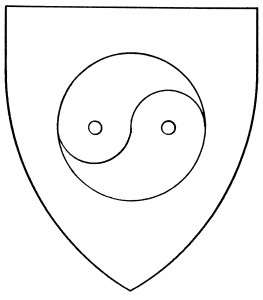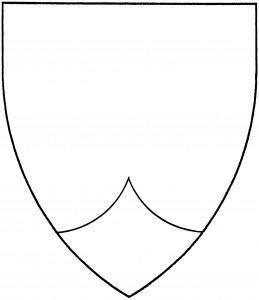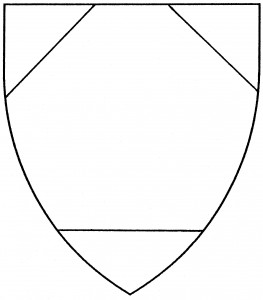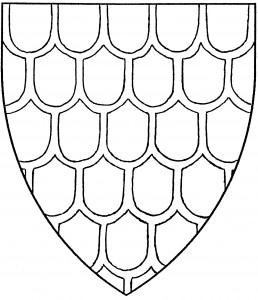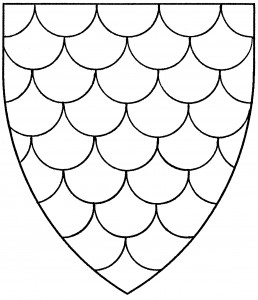Particularly in German heraldry, we find examples of partial wheels: a quarter-wheel, as in the arms of von Billick, 1605 [Siebmacher 71], or a half-wheel, as in the arms of Rusetzker [Siebmacher 73]. The orientation of the partial wheel (e.g., “dexter half of a wheel”, as in the illustration) must be specified in blazon.
Variants of the wheel include the “Catherine’s wheel”, the symbol of the martyr St. Catherine, with curved knife-blades radiating from the rim. As an heraldic charge, it’s found in the arms of Brentingham, Bishop of Exeter 1370-94 [DBA3 443]. There is the “cog-wheel”, also called a “gear-wheel” or “mill-wheel”, with an embattled outer edge, used in mechanisms from tiny clockworks to giant mill-works; it’s found in the canting arms (German Mühle, “mill”) of Mülinen c.1460 [GATD 20v]. Finally, there is the “water-wheel”, unique to Society armory, with vanes on the outer edge to draw power from running water. See also grindstone, spinning wheel.Cyprian of the Wheel bears: Argent, a wooden cartwheel of twelve spokes proper.
Caterine Barré de Venoix bears: Barry azure and Or, a Catherine wheel gules.
Iathus of Scara bears: Ermine, a cog wheel gules.
Patrick MacFynn bears: Per chevron vert and azure, a chevron argent between two natural dolphins embowed respectant Or and a water wheel argent.
Catherine de la Loire bears: Purpure, a Catherine’s wheel missing the dexter chief quarter between three fleurs-de-lys argent.
